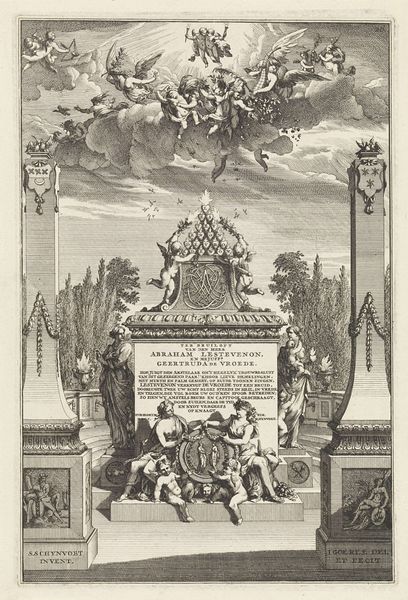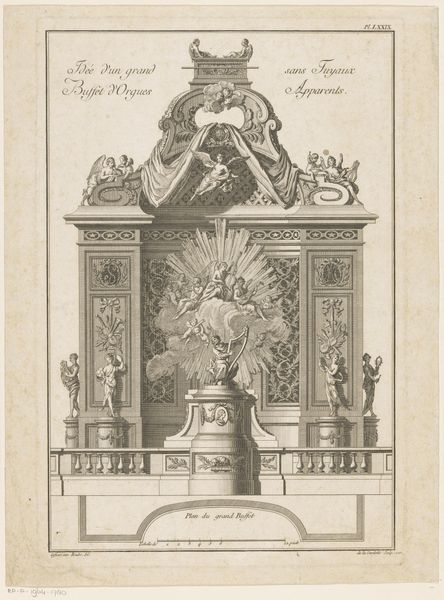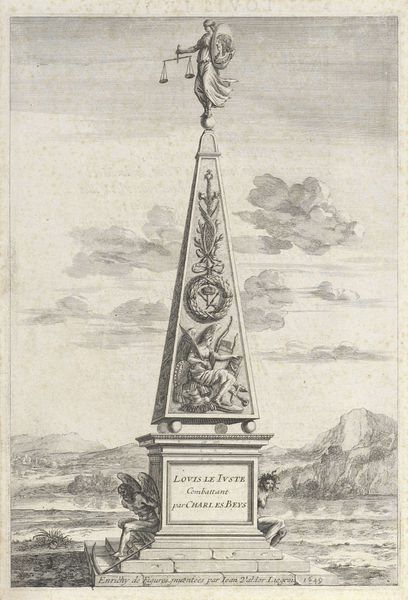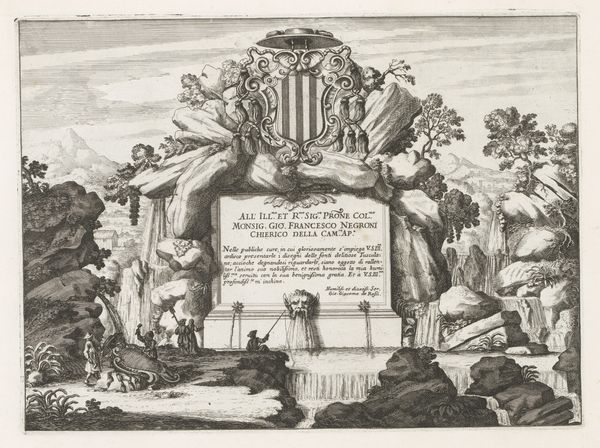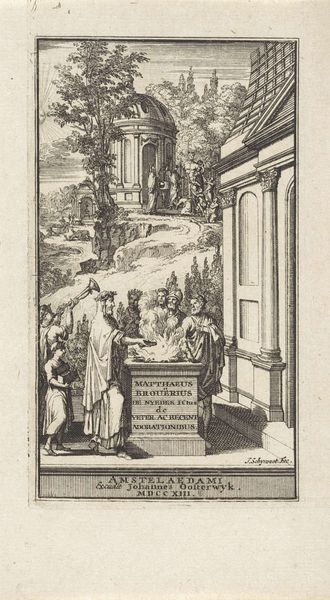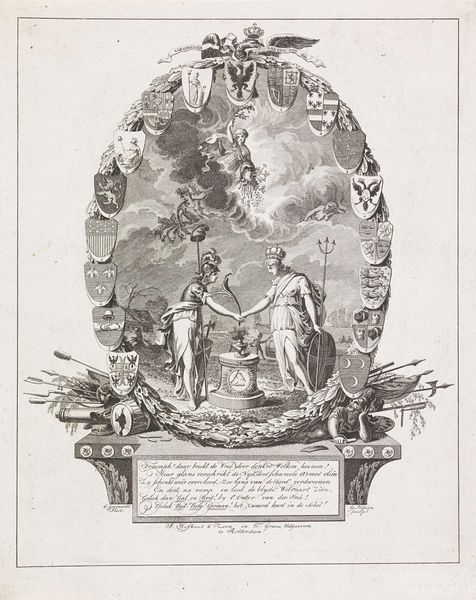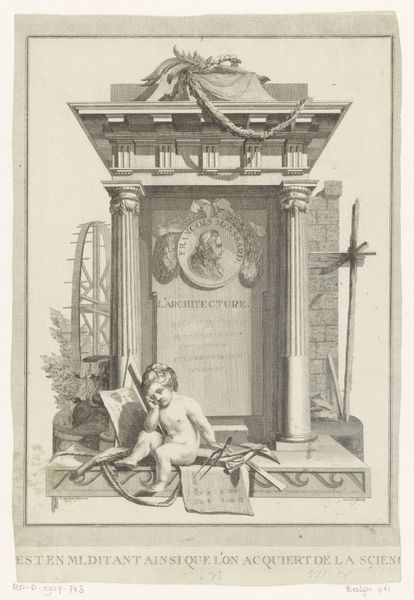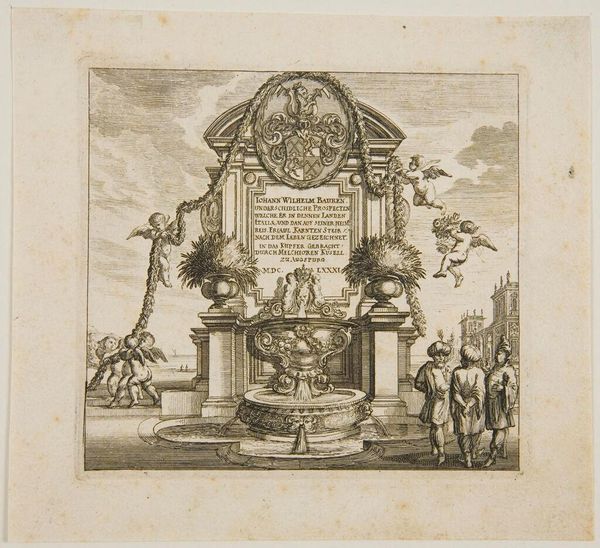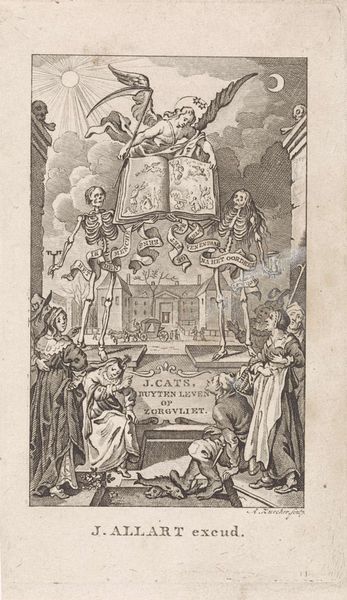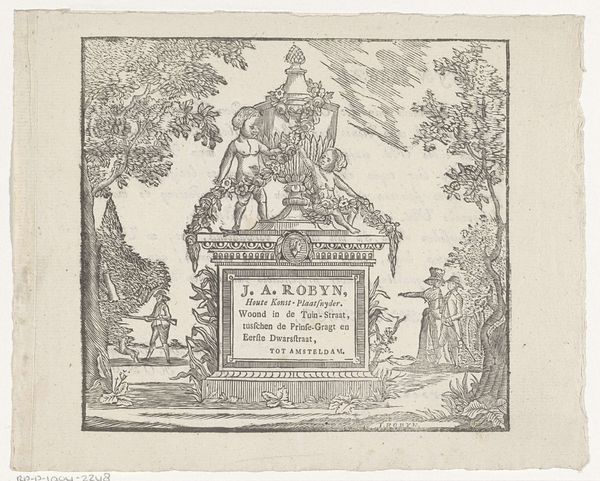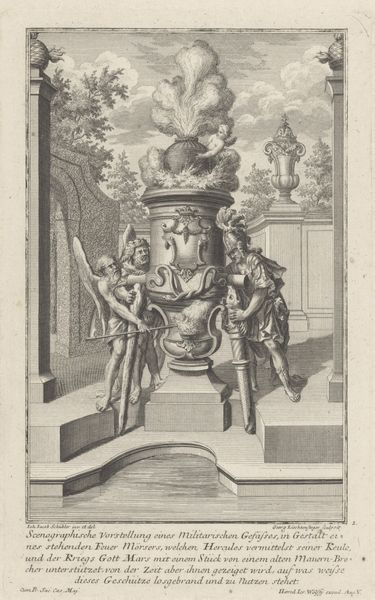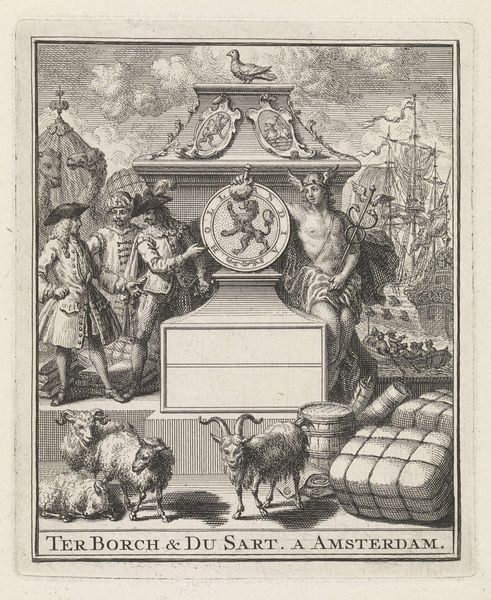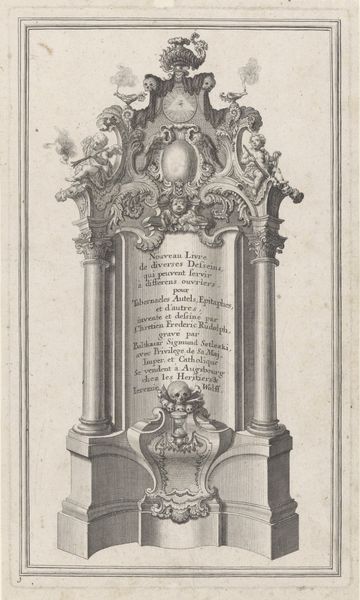![Titelblad til Johann Albrecht Mandelslo, ”Morgenländische Reisebeschreibung […], Schleswig 1668 by Christian Rothgiesser](/_next/image?url=https%3A%2F%2Fd2w8kbdekdi1gv.cloudfront.net%2FeyJidWNrZXQiOiAiYXJ0ZXJhLWltYWdlcy1idWNrZXQiLCAia2V5IjogImFydHdvcmtzLzkyMTY5MTliLTNhYjYtNGRmMy1iMzkzLTA3NzNlZDcwYjExZi85MjE2OTE5Yi0zYWI2LTRkZjMtYjM5My0wNzczZWQ3MGIxMWZfZnVsbC5qcGciLCAiZWRpdHMiOiB7InJlc2l6ZSI6IHsid2lkdGgiOiAxOTIwLCAiaGVpZ2h0IjogMTkyMCwgImZpdCI6ICJpbnNpZGUifX19&w=3840&q=75)
Titelblad til Johann Albrecht Mandelslo, ”Morgenländische Reisebeschreibung […], Schleswig 1668 1668
0:00
0:00
print, engraving
#
baroque
# print
#
history-painting
#
engraving
Dimensions: 273 mm (height) x 165 mm (width) (bladmaal)
Editor: Here we have Christian Rothgiesser’s title page from 1668, “Titelblad til Johann Albrecht Mandelslo, 'Morgenländische Reisebeschreibung', Schleswig 1668," made using engraving. I am struck by how this piece uses this ornate architectural structure with figures peering up at it – almost like consumers gazing at an advertisement. What is your perspective on this work? Curator: The means of production – engraving – speaks volumes. Consider the skilled labor involved, transforming metal into a matrix for disseminating images and, importantly, knowledge. This wasn't just about high art; it was about information, commerce, and the control of both. How does the depiction of these figures, their dress, and their interaction with the monument inform your reading of social class and its engagement with emerging global trade routes at that time? Editor: It's true, they seem like privileged spectators. It looks like some sort of important announcement or symbolic commemoration of Albrecht Mandelslo’s voyage. Curator: Exactly! Think about the availability of paper, the distribution networks for prints, and the accessibility of information. This print allows to disseminate Albrecht Mandelslo's voyage more broadly than if he was still depending only on wealthy patrons. Isn't it fascinating how a 'simple' print reveals a complex web of social, economic, and intellectual forces at play in the 17th century? Editor: I never considered the socioeconomic implications of a title page like this before. Seeing it as a product of labour and distribution really does shift my understanding. Curator: Indeed. It transforms our understanding of "art" itself, doesn’t it? We start to view it not as isolated beauty, but as an integral part of the machinery of early modernity and globalization. Editor: Definitely! This print is not merely an image; it is the tangible evidence of intersecting histories!
Comments
No comments
Be the first to comment and join the conversation on the ultimate creative platform.
